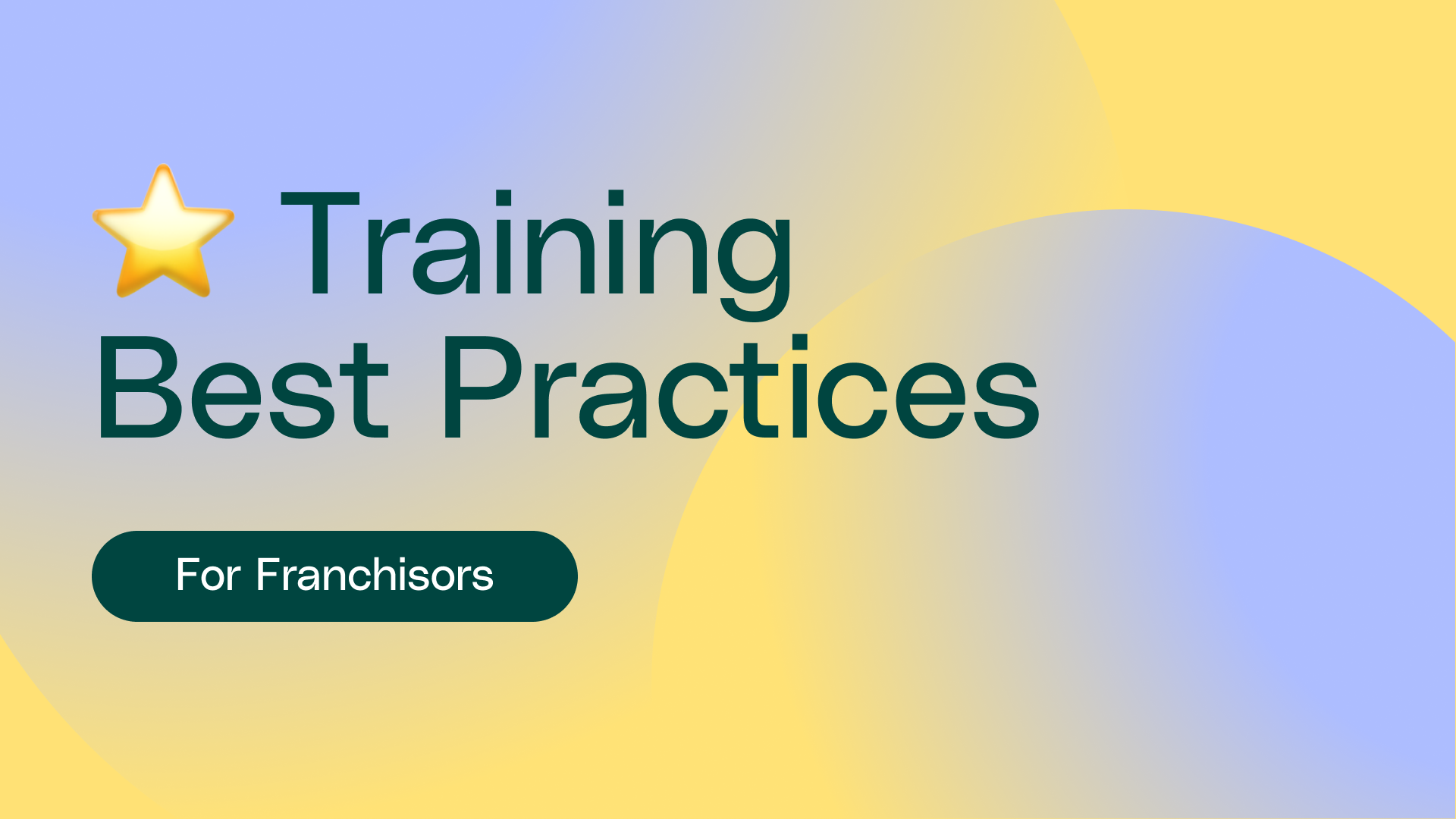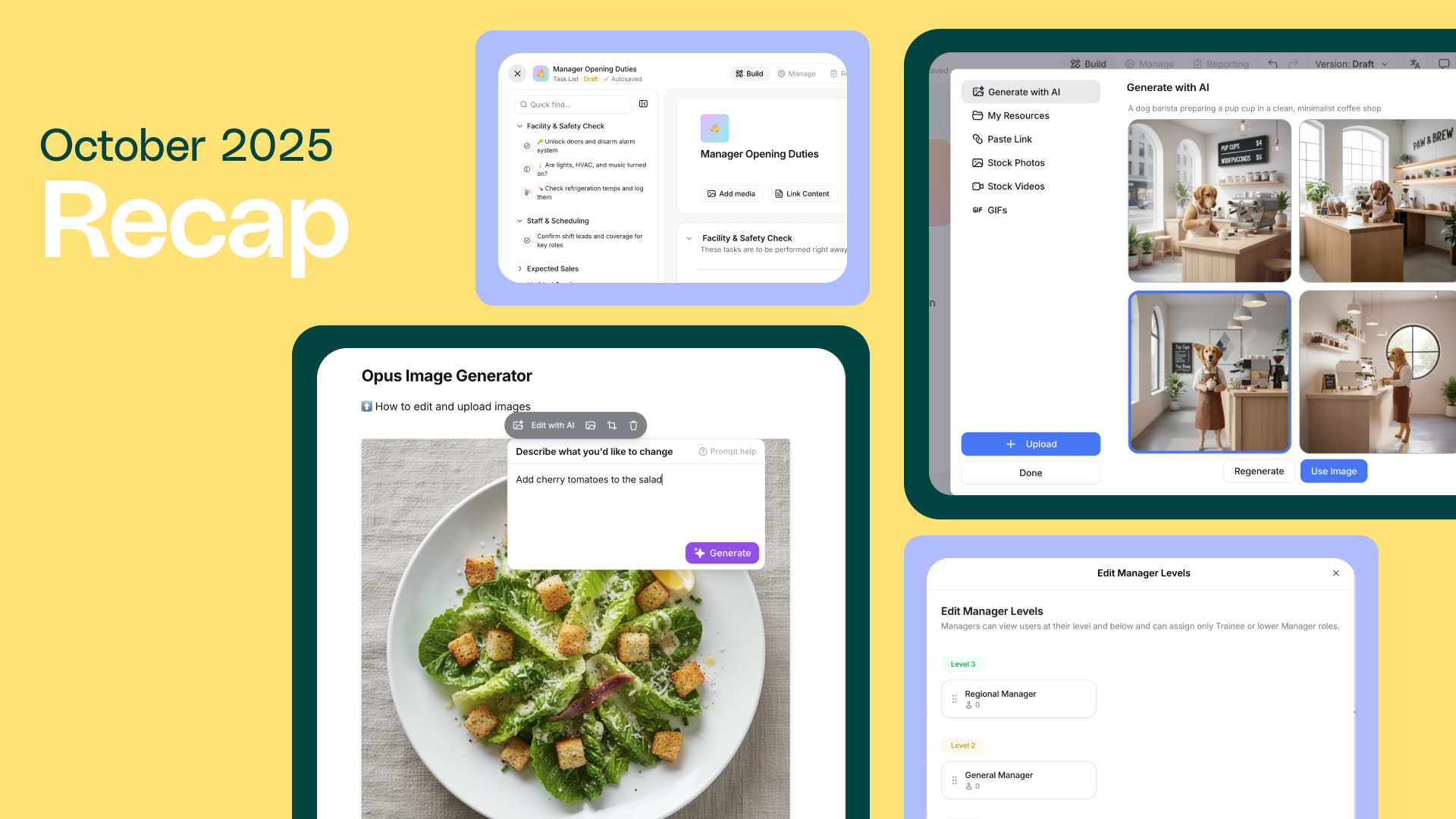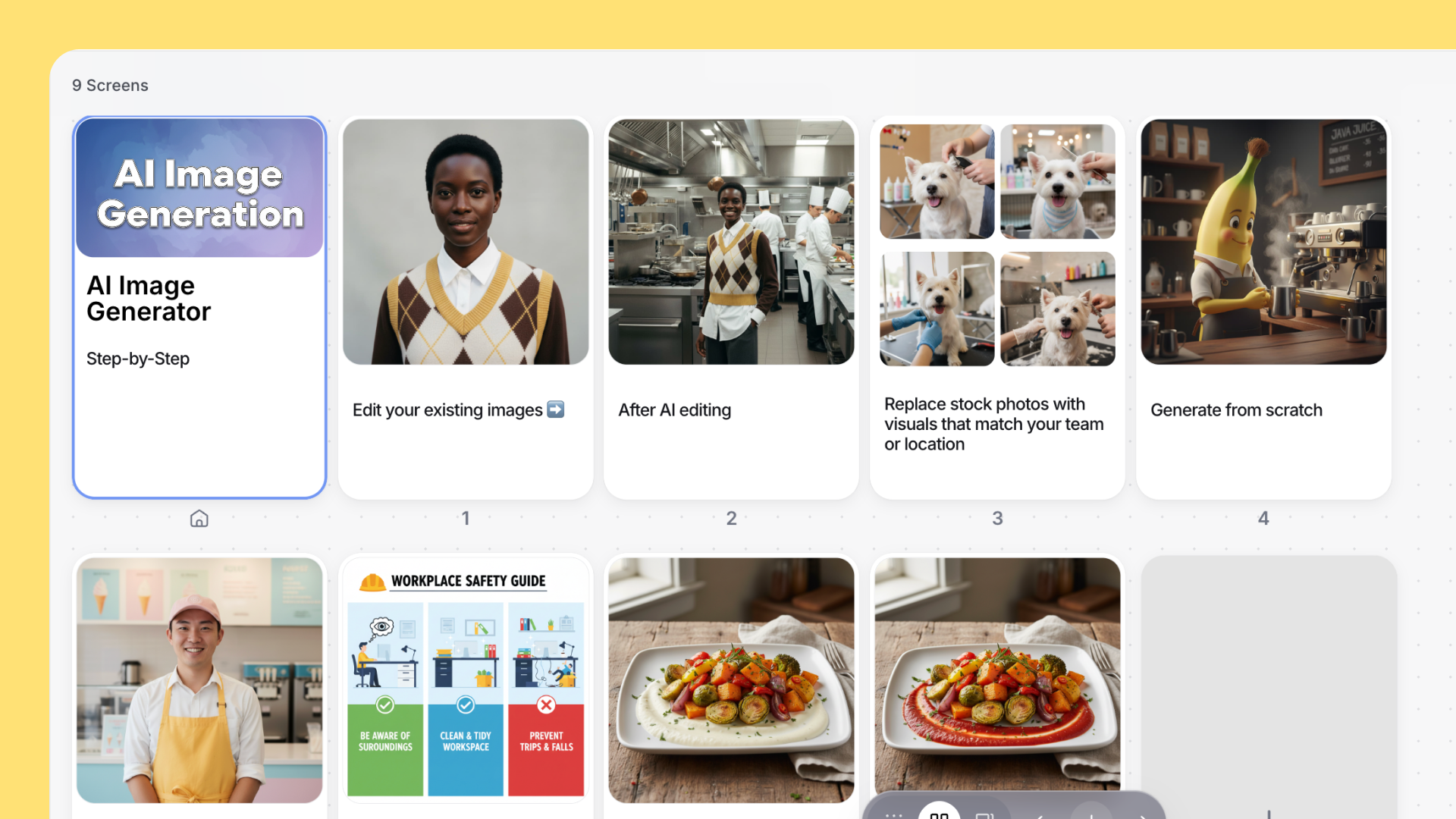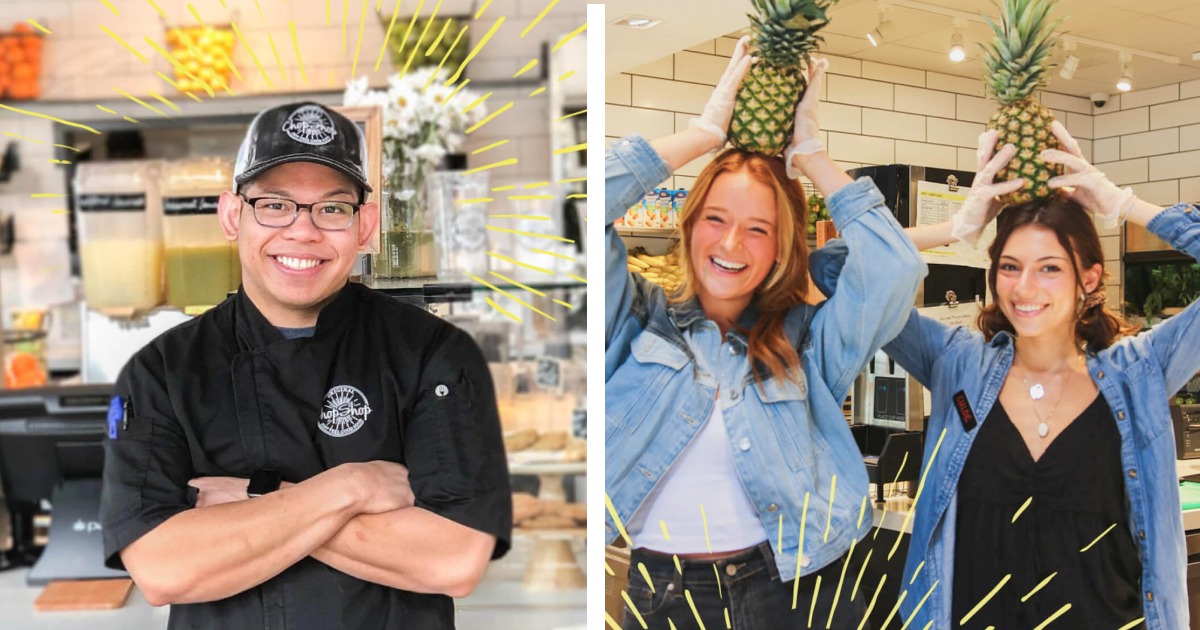Based on analysis of successful implementations: Smashburger, Bonchon, Bahama Bucks, and more
For 50+ Location Multi-Unit Brands
The Challenge: Why Training Platforms Fail in Franchise Systems
Change is change, regardless if the brand is franchised or fully corporate owned. However, there are a few key nuances that franchisors specifically need to factor in its implementation plan.
Why Training Platforms Fail in Franchise Systems
- Limited mandate, mostly influence: Franchisees are independent business owners, not employees
- Compliance constraints: Joint employer concerns limit corporate control (especially CA)
- ROI must be franchisee-focused: Corporate benefit ≠ franchisee benefit
- Distributed accountability: No direct authority over franchise employees or managers
- Multi-stakeholder alignment: Corporate L&D + Operations + FBCs + Franchise owners + Store managers
⭐️ The Goal: Proven playbook to drive franchisee buy-in through value, not mandates
Franchise Training Platform Implementation Playbook:
- Phase 1: Foundation (6+ weeks of pre-work)
- Phase 2: Pilot Program (4-6 weeks)
- Phase 3: Strategic Rollout (4-8 weeks)
- Phase 4: Optimization (90+ days)
- Key Takeaways

Phase 1: Foundation (6+ weeks of pre-work)
Much of this should be done before starting migration. Consider this pre-work!
Conducting a Needs Assessment
Before migrating content or selecting pilot locations, understand what problems you're actually solving for.
Three-Step Discovery Process
1. Define the End State
- What specific business outcome are you targeting?
- What will success look like 6-12 months post-launch? 12-24 months?
- What's the one thing that must improve?
2. Map Current State Gaps
Assess across four dimensions:
3. Socialize Findings (In This Order)
Strategic Sequence for Franchise Organizations:
- Global/Corporate Technology & L&D teams - Validate technical feasibility and get platform-level support
- Internal teams - Marketing, Operations, HR, select Franchise Owners understand use case and alignment
- Leadership team - Present with full stakeholder alignment already secured
Why this order matters: Starting with technology validates what's possible. Internal teams shape the implementation approach. Leadership sees a unified recommendation, not an open question.
⭐️ Example - Smashburger: Kelly identified that their existing LMS had become stale post-pandemic (5+ clicks to find anything), lacked translation capabilities for their multilingual workforce, and couldn't scale with their 3-5 year franchise growth plan. She identified these findings through a long period of socialization → validated via an abbreviated pilot → before rolling to 200+ locations in 60 days. She credits her ability to roll out quickly due to the years long foundational work. Read full story here.
Training Strategy & Content Migration Assessment
Step 1: Assess and refresh must-have content for franchise systems
- New Hire Onboarding (28-36 hours) - Non-negotiable baseline
- Compliance & Safety - Legal protection for both corporate and franchisees
- Role-Based Training (FOH, BOH, Shift Manager) - Consistency across locations
- Opening/Closing Procedures - Daily operational standards
- New Store Opening Playbook - Critical for growth-stage franchisors
- Manager Development (146-219 hours) - Leadership pipeline
- Ongoing Training - Continuous improvement, as needed
Step 2: Map What Exists Today 🍎 → Opus 🍏
Step 3: Build Based on Impact (Pick ONE)
- New hire inconsistency → Standardized modules + assessments; task management
- Training accountability → Operational metrics tracking + cadence; incentives
- Manager time drain → AI-search on company resources
- Ongoing training gap → Knowledge Checks; Refresher training
- Multilingual barriers → Translation + voice search (✅ automatically done in Opus. Learn more.)
💡 Most franchisors start with new hire orientation, Food safety, and Opening / Closing Procedures. For all other trainings, like role-based training, they upload all current resources into Opus for easy reference.
⭐️ Example - Bonchon: Launched with 400+ resources available on day one, eliminating the need for printing and laminating across their franchise system. This comprehensive library approach gave franchisees immediate value.
⭐️ Example - Newk's Eatery: Started lean with 3 modules in July, then rapidly scaled based on what managers actually needed. This validated their approach before investing in full content migration.
Stakeholder Alignment & Buy-In Strategy
Success requires alignment across 5 stakeholder groups before migration begins. Franchise systems fail when treated as top-down mandates.
Who Needs to Be Aligned (And How)
⭐️ Example - Newk's Eatery:Created "Red Shirt" certified trainer program where trainers travel for store openings, get paid at a higher rate, and have visible status. Regional Training Store designation requires 100% leadership completion—saving franchisees $10K+ per manager vs. sending to corporate training.
Communication Cadence During Foundation Phase (Weeks 1-6)
- Weeks 1-2: Executive announcement + "why now" business case
- Weeks 3-4: Franchisee Advisory Council preview + feedback sessions
- Weeks 5-6: FBC training + franchisee ROI one-pagers
Design Pilot - Goals & Location Selection
The goal of the pilot is to find and fix problems with 4-8 locations before risking your entire franchise system. See Phase 2 for more details.
Choose 3-10 Locations for Diversity
Note: one location may check the boxes across multiple criteria.
⭐️ Example - Bonchon: Selected 8 diverse pilot locations: corporate stores, franchisee locations, and a new opening to test the full range of scenarios their system would face.
⭐️ Example - Smashburger: Piloted with 3 locations—1 corporate store plus 2 franchisee locations—to validate both operational models before system-wide rollout.
Phase 1: Foundation Timeline
Weeks 1-2: Content Audit & Strategy
- Inventory existing materials across all formats
- Prioritize must-have content (see above)
- Select 4-10 pilot locations (5-8% of system)
- Define success metrics
Weeks 3-5: Platform Setup & Migration
- Configure for 50+ locations
- Migrate content in priority order
- Build user provisioning workflow
- Set up franchisee reporting access
Weeks 6-8: Admin Training & Pilot Prep
- Train corporate L&D team (2-3 sessions)
- Train pilot location managers
- Train Franchise Business Consultants (FBCs)
- Create support documentation
- Establish feedback channels
Phase 2: Pilot Program (4-6 weeks)
The Goal of the Pilot
Remember, The Pilot is Insurance: Find and fix problems with 3-10 locations before risking 50+.
What's Realistic:
✅ Identify major technical issues and workflow problems
✅ Gather qualitative manager and employee feedback
✅ Test core functionality under real conditions
✅ Surface content gaps and usability friction
✅ Build case studies and success stories for rollout
What's NOT Realistic:
❌ Statistically significant operational impact (turnover, sales)
❌ Representing all franchisee segments or market conditions
❌ Perfect content on day one
❌ Zero support tickets or issues
Pilot Success Metrics
Success metrics will range depending on your goals and your starting point. It’s important to set target metrics alongside timeline so all internal stakeholders understand if the implementation is on track.
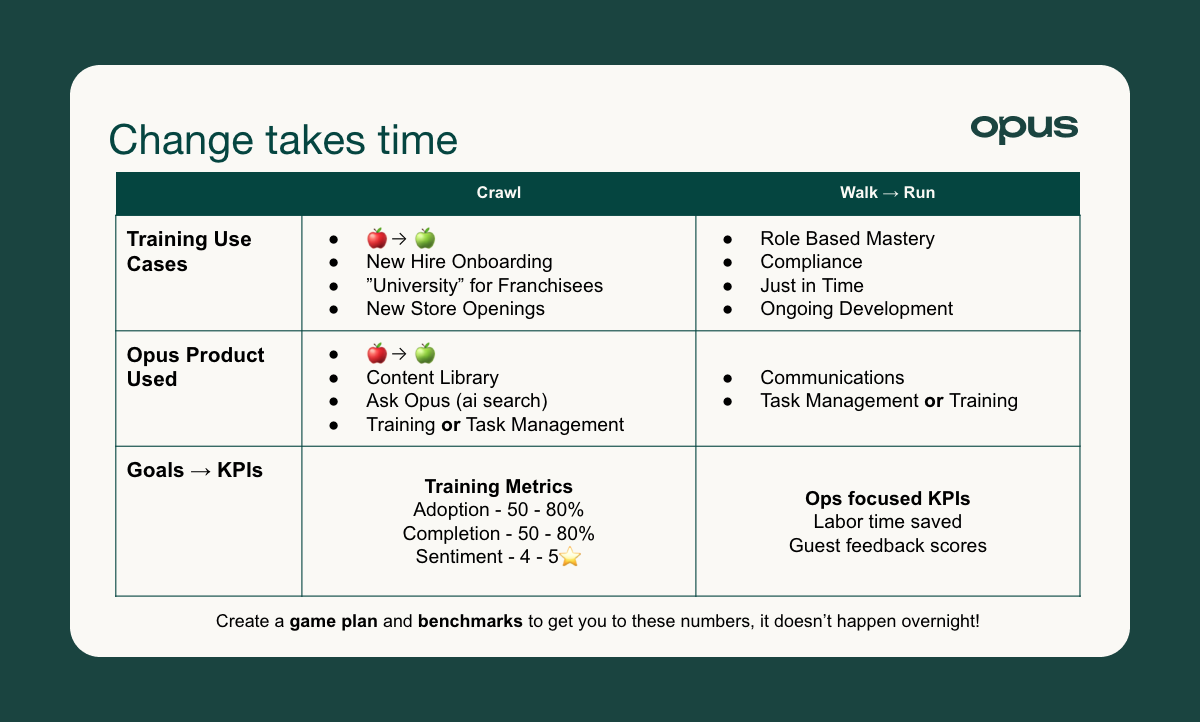
⭐️ Example - Bonchon:
Tracked adoption metrics by location during pilot, using transparency to drive accountability across the test group. This data informed their rollout strategy.
Phase 2: Pilot Program Timeline
Weeks 1-2: Launch + intensive support (daily check-ins)
Weeks 3-4: Optimize + collect data (weekly feedback)
Weeks 5-6: Validate + go/no-go decision
Go/No-Go Criteria
✅ GO: 80%+ manager, 50%+ employee engagement, NPS 6+
⚠️ ADJUST: 70-79% manager engagement, clear fixes
❌ NO-GO: <70% manager, NPS <5, persistent issues
Phase 3: Strategic Rollout (4-8 weeks)
Wave Strategy for 50+ Locations
Wave 1: Early Adopters (30-40% of system, Weeks 1-3)
- Pilot locations + corporate + volunteers
- Daily support office hours
- Monitor closely, intervene quickly
Wave 2: Majority (60-70% of system, Weeks 4-8)
- Remaining locations
- Leverage Wave 1 success stories
- Weekly office hours + ticket system
- Peer mentors from Wave 1
⭐️ Example - Smashburger:
Made Opus the "watering hole"—moved all lines of communication to the platform (training + resources + tasks). Read full story here.
Phase 4: Optimization (90+ days)
Months 3-6: Deepening Engagement
- Deploy additional features (Knowledge Checks, Ask Opus, Communications)
- Expand content based on analytics
- Train regional champions
- Quarterly franchisee reviews
⭐️ Example - Newk's Eatery: Monthly reporting to Area Directors and FBCs created accountability—"can't say nobody told me." Combined with monthly top performer lists, 100% club recognition, and pins/swag for celebrating wins publicly.
Months 6-12: Operational Integration
Prove ROI: Track ops metrics = 2x more likely to get budget increases
Link training to operations:
- Employee turnover
- Guest satisfaction scores
- Speed of service
- Food safety audits
⭐️ Example - Newk's Eatery: Integrated with Ovation guest feedback system to prove training impact on operations. Ovation scores increased as training completion rose—direct proof of ROI.
Critical Success Metrics
While this depends on the company’s stakeholder expectations and business needs, Opus generally recommends the following targets at each phase.
⭐️ Example - Bonchon: Achieved 90% engagement within 60 days of launch, with 25% of usage in languages other than English—validating their multilingual workforce strategy.
Timeline Factors
Extends (+2-12 weeks)
- Multiple brands
- Content in PDF/paper only
- High franchisee independence
- Recent tech fatigue
Accelerates (-1-9 weeks)
- Organized content library
- Previous digital success
- Engaged franchisees
- Active CEO sponsorship
Why This Works
The Three-Legged Stool
1. Speed to Value
- Pilot validates in 4-6 weeks
- Full rollout in 4-5 months
2. Risk Management
- Small pilot surfaces issues
- Wave approach allows course-correction
3. Sustained Adoption
- Intensive early support builds habits
- Measurement proves ROI
- Ops integration creates staying power
Key Takeaways
- Start simple: Apples-to-apples migration, then build for impact
- Pilot smart: 3-8 diverse locations = 5-8% of system
- Roll in waves: Manage risk, leverage peer influence
- Measure everything: Ops metrics = budget protection
- Front-load support: Build habits, then scale back


